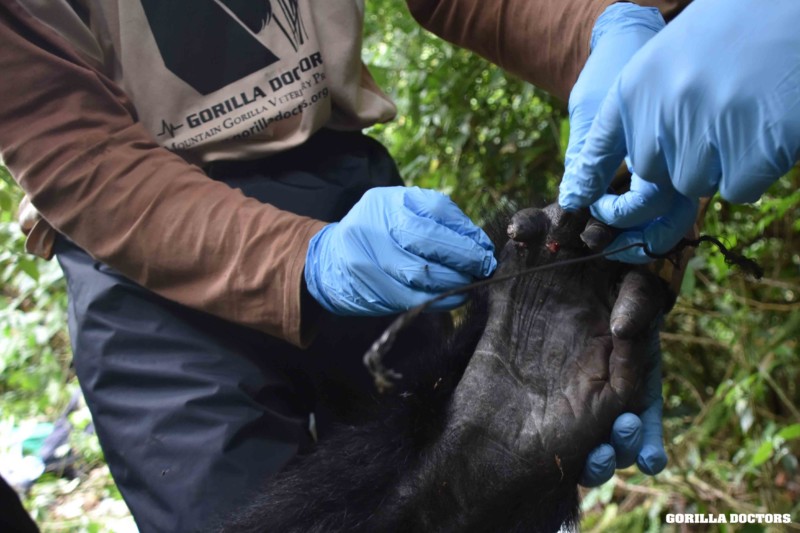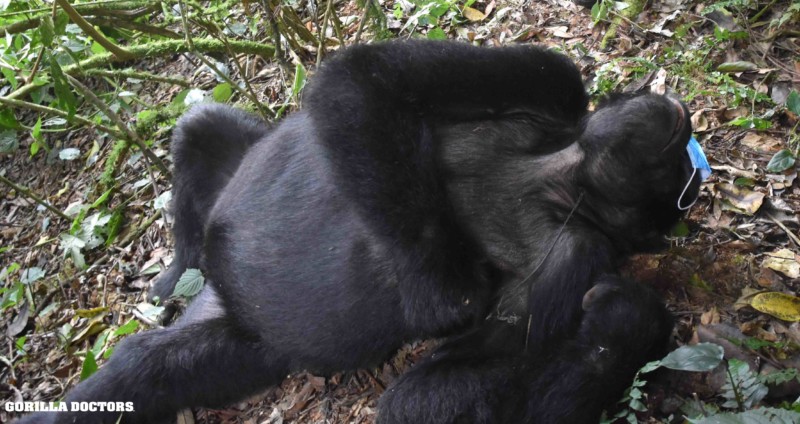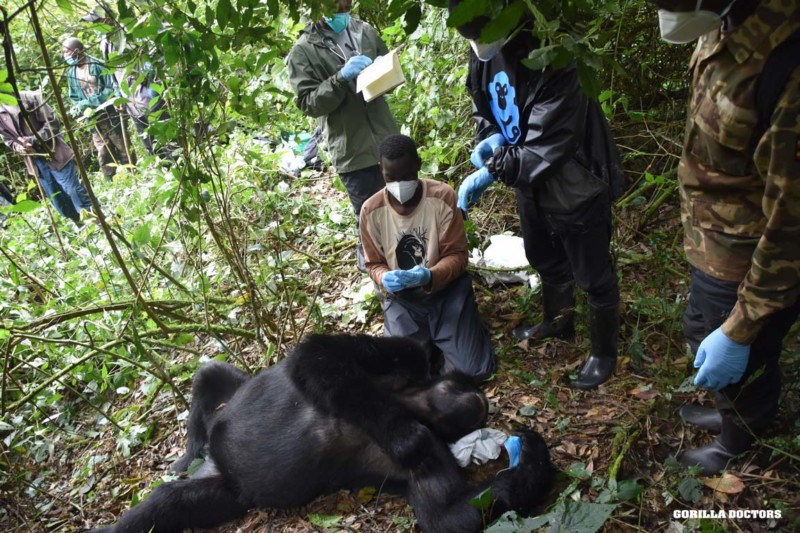First Gorilla Snare Rescue of 2022
By Gorilla Doctors Staff on Tuesday, January 18th, 2022 in Blog.With only one snare removal in all of 2021, the start of the new year brought our first emergency call from Bwindi Impenetrable National park about a blackback caught in a snare. On Friday, January 7, Gorilla Doctors rushed into the forest to conduct a veterinary monitoring visit, assess the condition of the blackback and intervene to remove the snare. The intervention team, led by Dr. Ricky Okwir Okello, found the Kahungye gorilla group in dense vegetation along a steep ravine. At first the group of more than 20 gorillas was calm and Dr. Ricky was able to anesthetize the blackback via dart but then the group’s five (5) silverbacks became increasingly aggressive and protective of the blackback with the snare, making it impossible for Dr. Ricky to then approach the blackback and provide treatment. Dr. Ricky and the intervention team made the decision to return the next day and try again…
Location: Bwindi Impenetrable National Park, Uganda
Gorilla Group: Kahungye
Mountain Gorilla: unnamed blackback (one of six in the group)
Gorilla Doctor: Dr. Ricky Okwir Okello
Intervention Team: Dr. Nelson Bukamba, Dilly Muhumuza, trackers and porters
Date: Saturday, January 8
The following day, Saturday, January 8, Dr. Ricky returned with a larger intervention team that would help manage the five silverbacks and form a protective circle around Drs. Ricky and Nelson while they treated the blackback.
When our hospital is the forest and our patients are wild, how do you manage the other gorillas in a group during an intervention? Experienced (and brave!) trackers place themselves between the gorillas and the Gorilla Doctors while they work. Using calming vocalizations and gentle arm waving movements, the trackers keep the other gorillas in the group at a safe distance. They never have direct contact with the gorillas or use any kind of force.
Before darting with anesthesia, Dr. Ricky observed that the wire snare was wrapped tightly around the blackback’s right hand, constricting his 3rd, 4th and 5th fingers. He was active and feeding with his left arm only and not using the right arm when walking. Understandably, the blackback was agitated when approached but Dr. Ricky managed to successfully dart him with anesthetic drugs – despite the challenging conditions of five silverbacks, dense vegetation and a steep slope (if you want to hear Dr. Ricky tell the story of another harrowing snare rescue, watch him HERE)!
Once the blackback was fully immobilized, Dr. Ricky proceeded to remove the snare and clean and treat the wounds with antibiotics. The blackback was also given a full physical exam and treated with de-worming medication.
Why did we administer de-worming medication? A number of mountain gorillas in Bwindi Impenetrable National Park present with clinical signs of parasites, so an intervention is an opportunity to also administer additional medication and collect samples for testing. Gorilla Doctors and our collaborators at the Czech Academy of Sciences, with funding from Morris Animal Foundation, are investigating parasite-related disease in gorillas in Bwindi Impenetrable National Park. This multi-year study will further improve knowledge of the role that parasites play in mountain gorilla health.
Upon completion of treatment Dr. Ricky administered an anesthetic reversal agent. The blackback woke up and returned to his group, a little groggy but fully mobile. Close monitoring of his wound healing and recovery will continue.


 Donate
Donate



